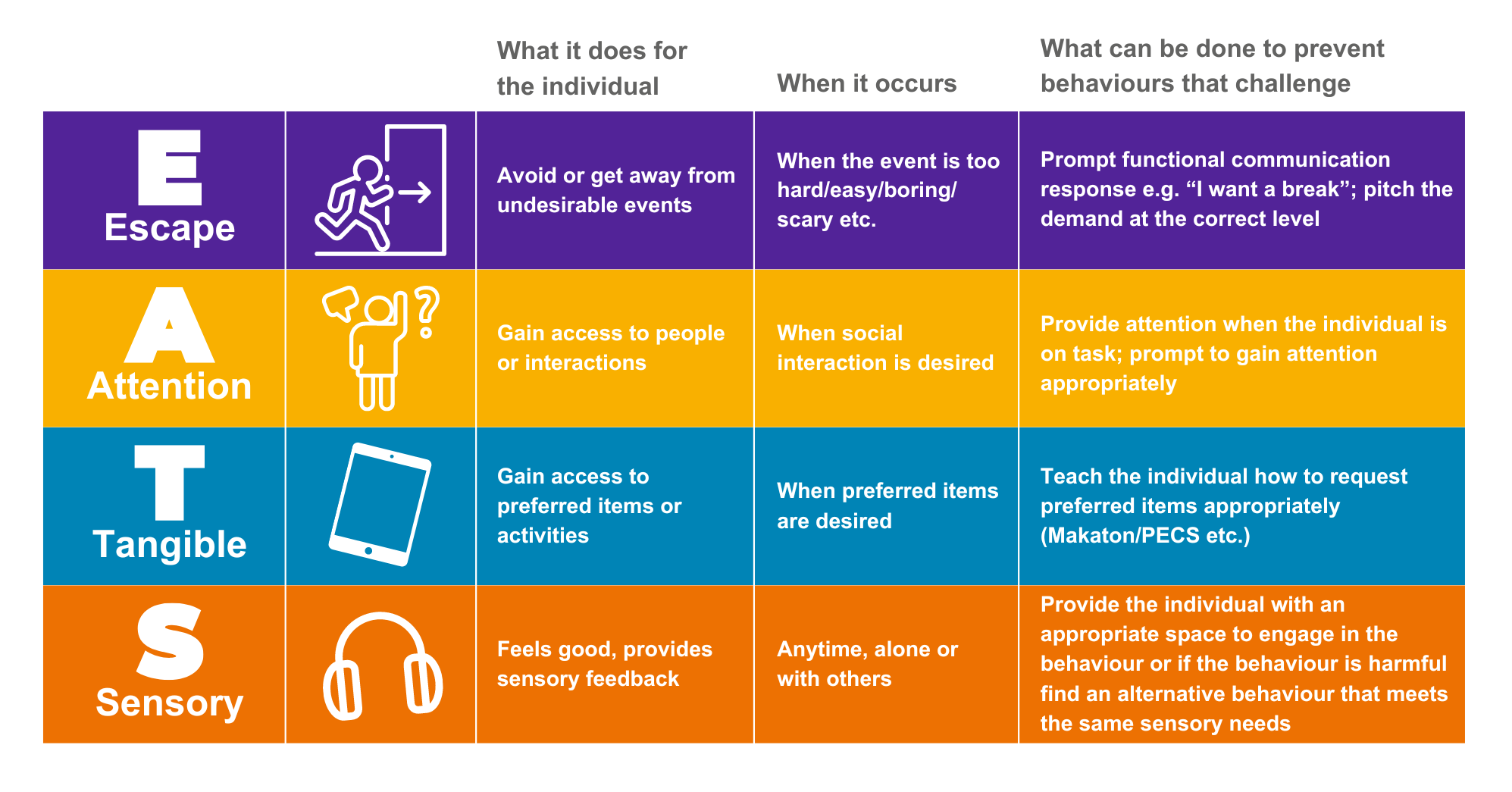Empowering People, Launching lives
Many autistic people will display behaviours that challenge. Largely, this behaviour occurs as a result of the person finding it hard to communicate.
In this context, people often refer to aggression or self-injurious behaviour (SIB). In reality we should consider it to be any behaviour that has a negative effect on the person and their family. Behaviour could include, though is not restricted to:
It is important to remember that all behaviours serve a unique purpose to the individual. Understanding why these behaviours occur is an important step in preventing any harm to the individual. Learn more about the functions of behaviour.

An alternative
Behaviours that challenge are learnt in the same way that all behaviour is. What happens after the behaviour is the most important part, this is when reinforcement can occur. If a child is motivated by attention, and then receives attention for behaviours that challenge, it will make it more likely to occur again in the future. By providing an alternative way to gain attention appropriately, you can reduce the chance of behaviours that challenge occurring in the future. Learn more about the ‘why’ here.
Coping with behaviours in public
It can be hard if these behaviours occur in public. It may be difficult to explain to passers-by if you are also trying to keep your child safe. Having cards explaining your child’s behaviour can help. Download an example here.
For more information on behaviours that challenge, download our factsheet on the topic.

Every autistic person will have their own preferred method of communication. They may communicate vocally, or they may...
